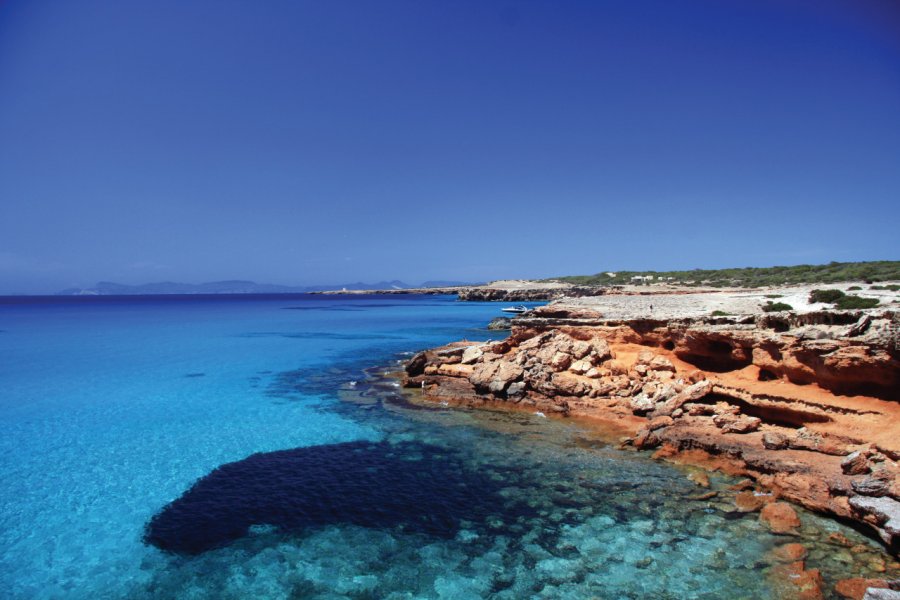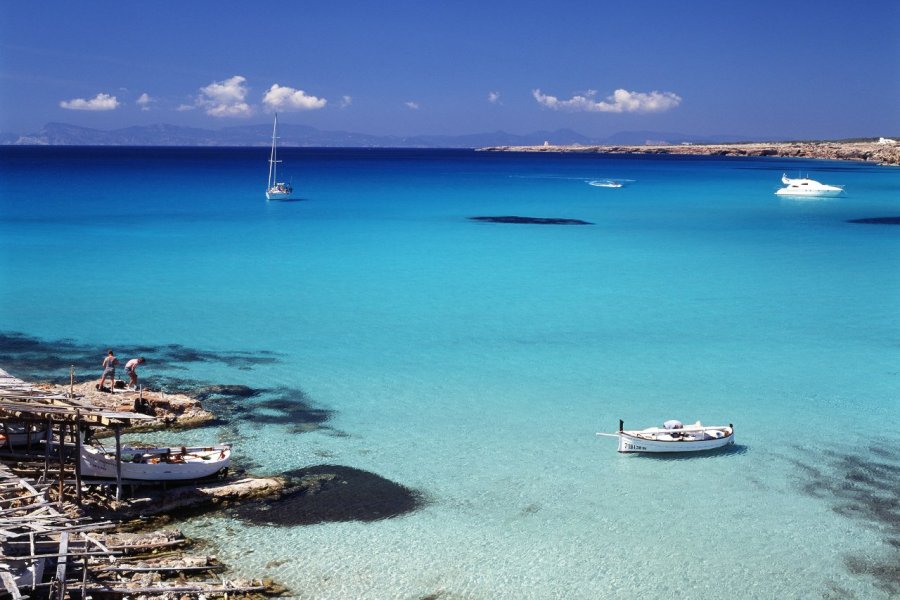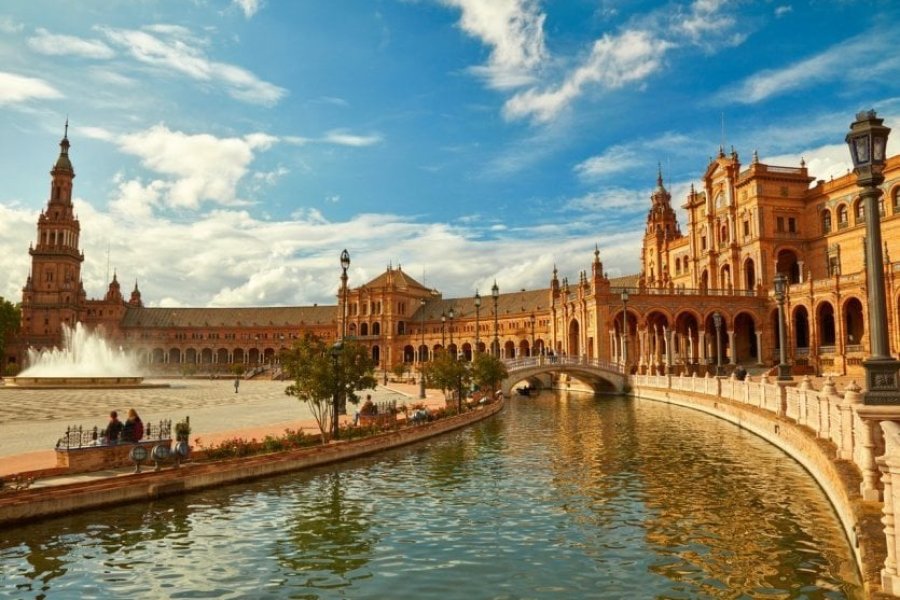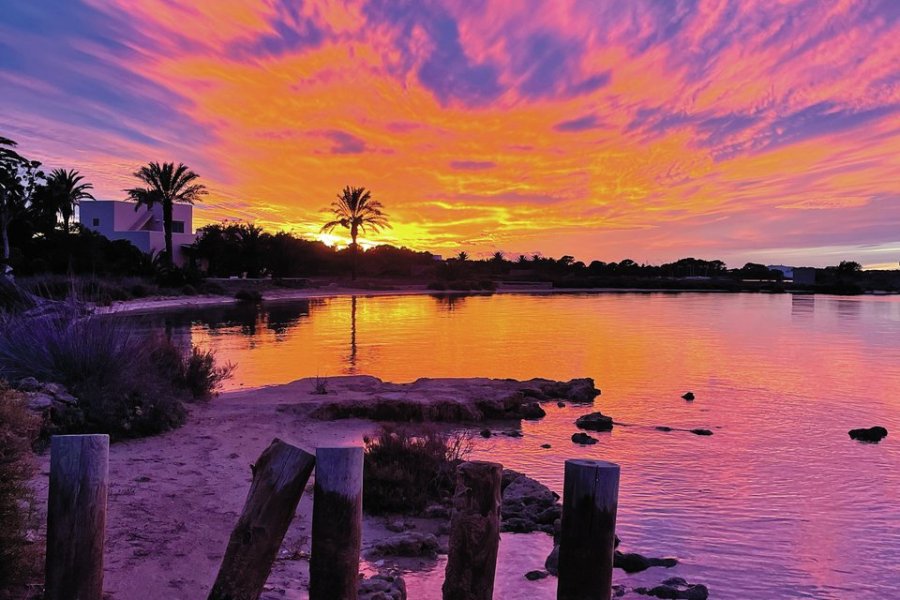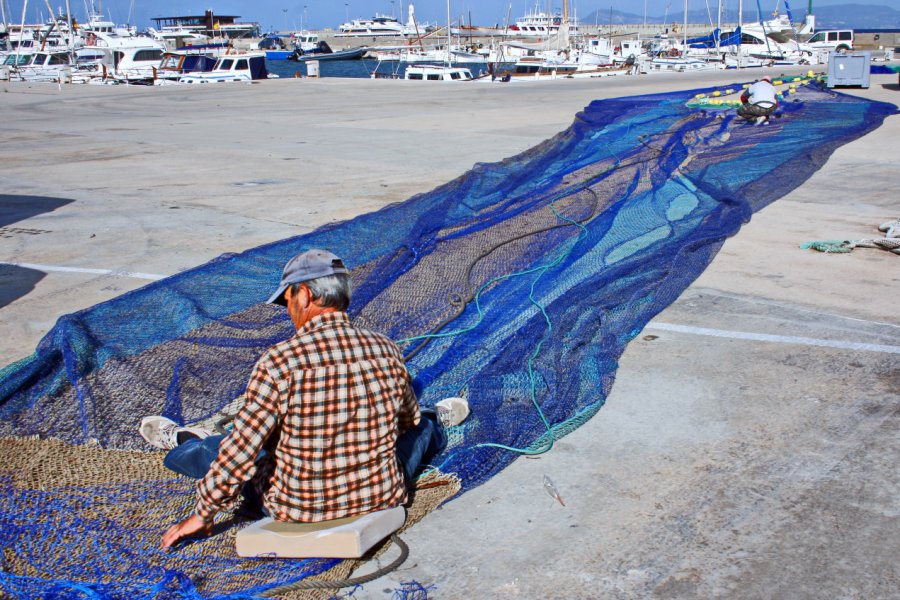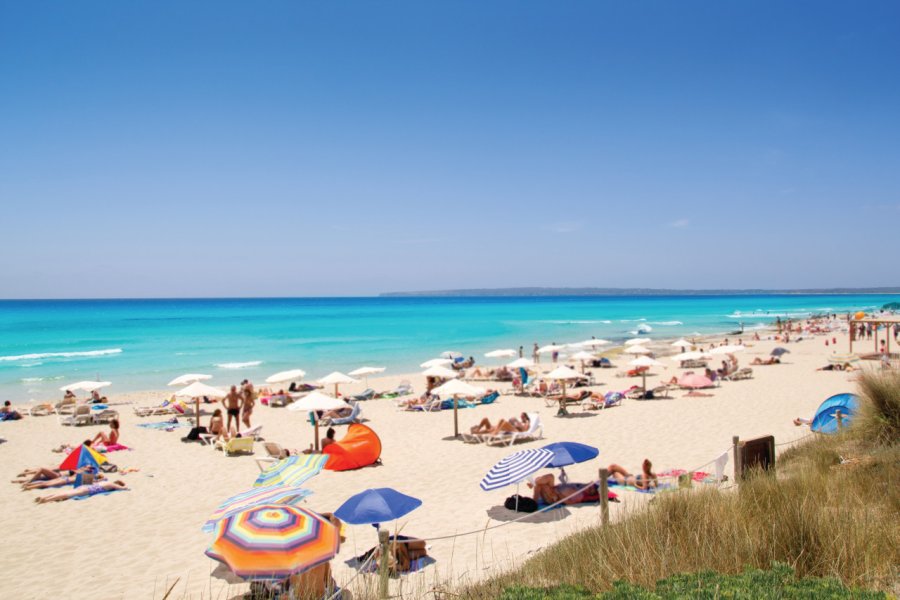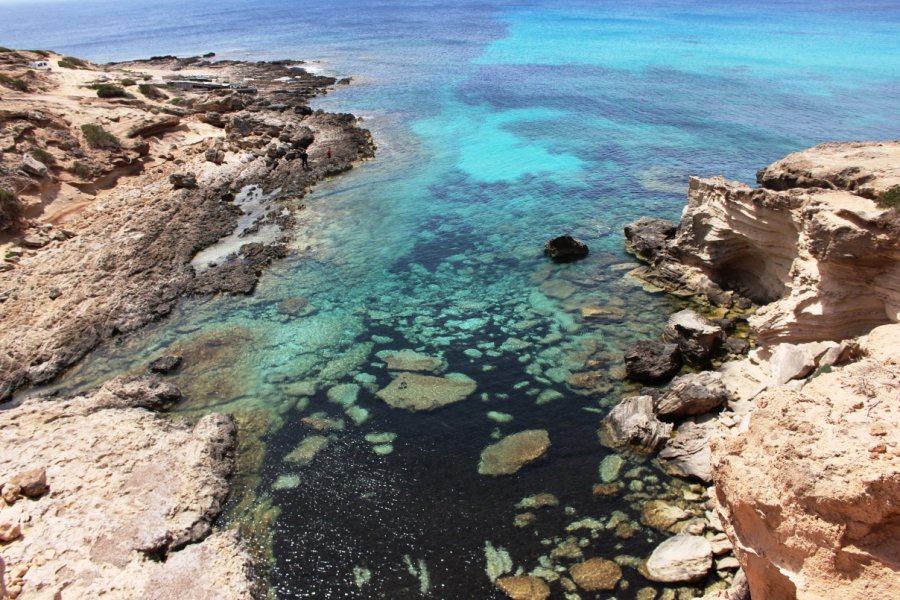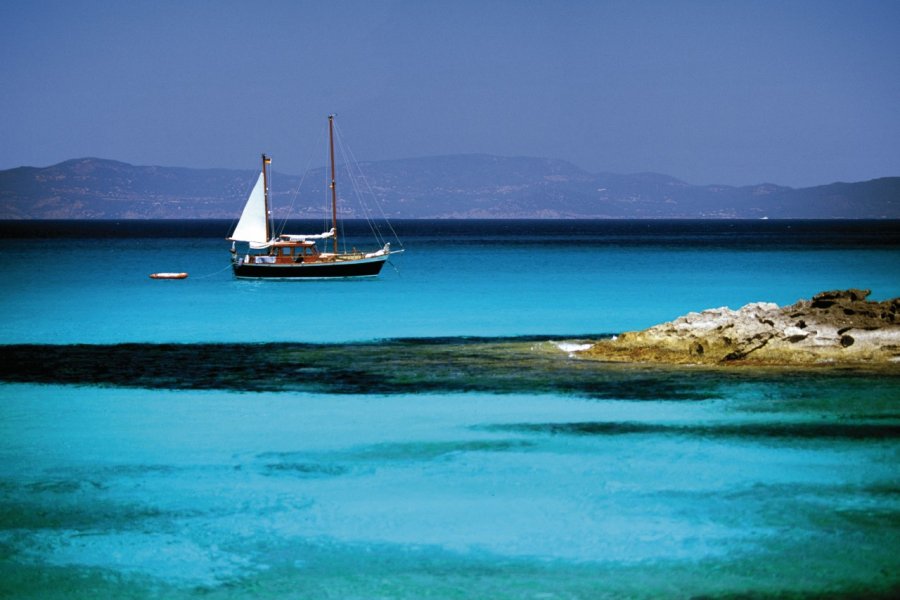Travel guide Formentera
Emerging from the Mediterranean, 6 km south of Ibiza, this island looks like a Polynesian lagoon! No airport. You arrive by boat and it is already another rhythm that settles in... Head for the dunes, the pine forests and the turquoise waters. With its 19 km length, the narrow Formentera is the smallest of the four islands of the Spanish Balearic archipelago. Many small islets are attached to it. Accessible by ferry from Ibiza, Formentera is a famous destination for scuba diving and sailing. Hiking is also practiced there. In the summer, locals come to spend the day there on weekends. Between them, Ibiza and Formentera make up the sub-archipelago of the Pityuse Islands.
This island is a jewel of preserved Mediterranean nature. Two roads, two lighthouses, a port with its marina, two marshes, salt flats, a mill, vineyards, olive groves and four villages structure Formentera. From Savina, where the port is located, the "main" road of the island starts, which connects the main village in the center and gives access to the other villages by passing between the two large salt ponds. The secondary road leads to the south of the island and to the Cape of Berberia with its powerful lighthouse, a landmark for all sailors arriving from the Strait of Gibraltar. Another lighthouse marks the Cape of La Mola, at the eastern end, where the main road ends. And while in Ibiza, the dance floors are in effervescence and the decibels are at their maximum, you can sit quietly on a terrace of the port while nibbling on tapas...
What to see, what to do Formentera?
-
Book an activity
-
Customized travel
- The most beautiful cities Formentera
When to go Formentera ?
The small island, which for a long time remained confidential, no longer escapes the tourist influx of the very high season from July 15 to the end of August. However, the pressure is not as strong as in Majorca or Ibiza. Spring and autumn, and even winter when temperatures remain mild but the water becomes cooler, remain the best seasons to enjoy the island. Two highlights on the island: Sant Joan, on June 24 in La Mola, and the great festival of the island's patron saint Sant Jaume, on July 25, in San Francisco. There is also Santa Maria, on August 5, which is venerated like everywhere else in Spain.
Suggested addresses Formentera
Travel Formentera
-
Find a hotel
-
Car Rental
-
International e-SIM package
-
Find a local agency
Vous découvrez Formentera pour première fois et ne savez pas par où commencer ? Peut-être avez vous déjà monter votre programme aussi. Laissez-nous tout de même vous présenter quelques suggestions d'itinéraires. Vous pourrez y piocher quelques idées et/ou accommoder certaines de ces propositions à vos goûts et vos envies. La première idée de séjour s'adresse aux néophytes qui découvrent pour la première fois Formentera mais aussi à ceux qui la connaissent déjà et voudraient en effectuer le tour en cinq jours sans ne rien omettre ! Considérer notre idée de séjour "Formentera Express" comme un best-of de l'île. La seconde suggestion aura les faveurs de ceux qui viennent pour faire le plein d'énergie. Le farniente est au programme de ce week-end ! Il vous permettra en outre de découvrir les plus belles plages de Formentera. Pour ce qui est du choix des restaurants, n'hésitez pas à piocher dans le guide, il est pétri de bonnes adresses !
Find unique Stay Offers with our Partners
How to go Formentera
How to go alone
You can make a simple one-day stopover in Formentera when you stay in Ibiza, but it would be a shame to deprive yourself of a more advanced immersion on this island. No difficulties to organize your stay from France. Just land in Ibiza, take the ferry and you're there! You will always find accommodation, except perhaps in the very high tourist season when it is preferable to have reservations.
How to go on a tour
The organized trips proposed by the big French companies concern rather the other islands, mainly Majorca and Minorca. But you have the possibility to organize your own trip from France with a local company like Mallorca Authentic. The assurance of a perfect stay!
How to get around
It is the smallest of the Balearic Islands and therefore the only one where it is easy to go without a car. But you can also rent a car, a scooter or a bicycle to leave the beaches and connect the villages, visit the salt flats and the monuments.
Featured articles Formentera
Discover Formentera
Formentera captivates with its subtle blend of tradition and modern trends. This unique blend is reflected in its gastronomy, which is both authentic and inventive. Its unspoilt environment is a veritable playground for lovers of the sea, with crystal-clear waters ideal for water sports and wild coastal paths inviting you to take a stroll. As you explore these landscapes, you'll discover a wealth of typically Mediterranean flora and fauna. Religious festivals, folk dances, craft markets and a well-preserved heritage bear witness to the inhabitants' attachment to the past and to traditions. The rhythm of life here has remained peaceful, guided by the tides and the cycle of the seasons. So, if you're looking for a relaxing destination, bathed in charm and tranquility, set sail for the smallest island in the Balearics!
Pictures and images Formentera
The 12 keywords Formentera
1. Green paths

The island's authorities have signposted some 30 green routes for cycling and walking. A booklet outlining the routes is available free of charge from the tourist office. Don't forget to hydrate en route, as the sun beats down hard in summer. The island is small and flat, except on the way up to La Mola.
2. Caves
The cliffs here are pierced by numerous natural caves and underground galleries. They were once shelters for animals, prehistoric man and later pirates and hippies. Some were dug millions of years ago, such as the famous Cova d'en Jeroni, discovered in 1975.
3. Coves

Formentera abounds in small coves of varying degrees of wilderness. Caló des Mort is one of the best known, although it attracts many visitors in high season. Other coves include Cala Saona, a beautiful sandy cove surrounded by turquoise waters on the east coast, and Cala en Baster, a rocky cove nestling at the foot of the cliffs.
4. Escars
Landing stages or escars are wooden structures installed in the island's small natural harbours. They consist of small sheds and long rails running down to the water. They can be seen at Es Caló de Sant Agustí, which was once Formentera's second most important port (albeit a very small one!).
5. Hippies
The hippies landed on Formentera in the middle of the 20th century, transforming this Mediterranean island into a mythical stopover on the road to India. Legends such as Pink Floyd, Bob Dylan and the members of Led Zeppelin enjoyed the gentle lifestyle of this little paradise. Even today, Formentera continues to attract artists.
6. Mills

Once known as the "land of wheat", Formentera still boasts some of its old windmills, at Sant Francesc, Sant Ferran and La Mola. These circular lime buildings, typical of the island, have two floors: a first floor and a main floor, with long wings up to 5 meters long.
7. Naturism
All Formentera's beaches are nudist, and you'll see many enthusiasts in Adam's clothes, lounging or playing ball on the sand. Don't be surprised if you're the only clothed person on some beaches! Tolerance is the watchword here: textile and nudist enthusiasts coexist in perfect harmony.
8. Headlights

Formentera's lighthouses, guarding La Savina, La Mola and Cap de Barbaria, are essential symbols of the island. Perched 120 meters high on a cliff, the La Mola lighthouse is the highest of the three. This breathtaking, windswept site was even immortalized by Jules Verne in a passage from his novel Hector Servadac.
9. Pityuses
The Pityuses, or Pityuse Islands, comprise the islands of Ibiza and Formentera, as well as several islets, including S'Espalmador and S'Espardell. The name Pityuse is probably derived from "pitys", which means "pine" in Greek. In ancient times, the Pityuses were differentiated from the rest of the Balearic Islands (Mallorca and Menorca being the Gymesias).
10. Dry fish
Peix Sec de Formentera, also known as Formentera dried fish, is a traditional island product, prepared by drying in the sun and wind. This process gives the fish, especially the sama, a firm texture and a very intense flavor. Dried fish is used in local cuisine, to garnish salads, for example.
11. Posidonia
These aquatic plants, which contribute to the richness of ecosystems, are responsible for the transparency of water, thanks to their abundant production of oxygen. Almost 100 million years old, Posidonia oceanica covers a large part of the Mediterranean seabed. The largest meadows are found off Formentera.
12. Sargantanes
Sargantanes(Podarcis pityusensis) are ubiquitous on Formentera: you'll find them on postcards, on keyrings, threading their way between rocks or even lining your towel on the beach! These large lizards, endemic to the Pityuse Islands, have become the island's emblem. There are over 30 subspecies around Formentera.
You are from here, if...
You speak Catalan (or Castilian). If you know two words of Catalan, now's the time to use them! People here are used to tourists, but will appreciate anyone who makes the effort to speak their language.
You won't be so formal with (almost) anyone. As a rule, Spaniards abhor the use of "vouvoie" and banish the word "usted" from their vocabulary, except when addressing the elderly.
You respect the environment by not leaving plastic or cigarette butts lying around. Nature is sacred on Formentera! It's frowned upon to throw cigarette butts on the ground or leave them lying around on the beach, let alone litter. There are garbage cans everywhere.
There's nothing wrong with stripping off your clothes on the beach for a spot of sunbathing. The island's multicultural population practices nudism with complete freedom.
You add ice cubes to your café au lait. Take a café au lait, throw in a few ice cubes, and you've got your refreshing cafè amb gel.
Other destinations Formentera
- Platja De Llevant
- Cala En Baster
- Cala Saona
- Es Caló De Sant Agustí
- Ses Platgetes
- Caló D'Es Mort
- Es Copinar
- Sant Francesc Xavier
- Es Ram
- Es Arenals
- Platja De Ses Illetes
- Platja De Sa Roqueta
- Platja De Migjorn
- Cap De Barbaria
- Punta De La Gavina
- Platja Des Cavall D'en Borràs
- La Savina
- Can Marroig
- Es Pujols
- Platja De Tramuntana
- El Pilar De La Mola
- Sant Ferran De Ses Roques
- Es Ca Marí
- Racó Fondo
- Es Mal Pas
- Es Còdol Foradat
- Es Valencians
